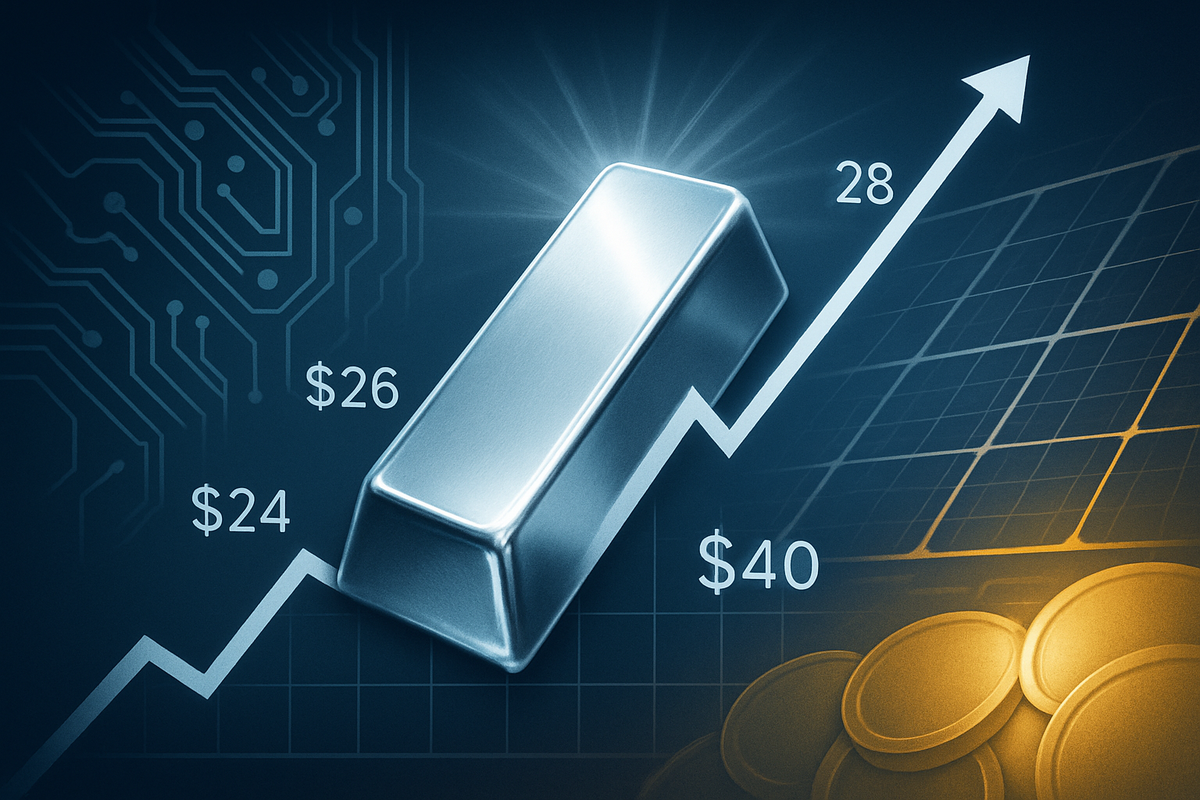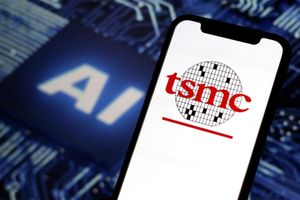
Mumbai, India – Silver has emerged as the undisputed star of the commodities market in October 2025, demonstrating an astonishing surge that has seen it decisively breach the significant Rs 1.70 lakh per kilogram mark on the Multi Commodity Exchange (MCX). This impressive performance not only underscores silver's inherent strength but also highlights its remarkable outperformance against its more celebrated counterpart, gold, in the current rally. As of mid-October, the white metal's year-to-date gains have dwarfed those of gold, signaling a potential shift in investor preference and market dynamics.
The rapid ascent of silver prices is sending ripples across the financial markets, prompting investors and analysts alike to reassess the precious metals landscape. With robust industrial demand, persistent supply deficits, and growing safe-haven appeal converging, silver is cementing its position as a critical asset in a volatile global economy. Its breach of key psychological and technical resistance levels suggests a powerful bullish momentum that could redefine its valuation in the coming months.
Detailed Coverage: Silver's Ascent Beyond Expectations
The current rally has seen silver achieve unprecedented milestones on the MCX. On October 10, 2025, silver futures contracts began their aggressive climb, pushing past the Rs 1.70 lakh per kilogram threshold. This momentum continued unabated, with prices reaching ₹1,90,000 per kilogram by October 15, and even touching ₹2,06,000 per kilogram in regional markets like Chennai on October 16. The December 2025 futures contract, in particular, registered a notable 1.18% gain on October 17, marking a nearly 20% increase for the month alone. This sustained upward trajectory underscores the fierce demand and limited supply characterizing the silver market.
The timeline leading up to this moment reveals a confluence of powerful drivers. Throughout 2025, silver has been quietly building momentum, fueled by an insatiable industrial demand, particularly from the burgeoning green energy sector. Silver is a crucial component in solar panels, electric vehicles (EVs), and advanced electronics, sectors that are experiencing exponential growth globally. This industrial appetite accounts for an estimated 60-70% of total silver demand. Simultaneously, escalating geopolitical tensions, fears of a looming global recession, and a weakening US Dollar have amplified silver's appeal as a safe-haven asset, drawing significant investment inflows into silver-backed Exchange Traded Funds (ETFs).
Key stakeholders in this rally include major industrial consumers, institutional investors, and individual retail investors seeking protection against inflation and economic uncertainty. The market has also witnessed a "short squeeze" scenario, exacerbated by tight physical supply in major trading hubs, leading to backwardation where immediate delivery prices exceed future contract values—a clear indicator of acute physical scarcity. While the initial market reaction has been overwhelmingly bullish, some analysts have cautioned about the inherent volatility of silver, noting a sharp correction in some ETFs on October 16 as inflated valuations normalized.
The outperformance against gold is particularly striking. Year-to-date, as of mid-October 2025, silver has recorded an astonishing surge of over 70%, with some reports even indicating gains nearing 87%. In contrast, gold's rally, while robust, has been comparatively modest, with gains ranging from approximately 50% to 66% over the same period. This divergence highlights silver's characteristic volatility, often moving up to 1.7 times faster than gold in bullish market conditions, amplifying its gains and capturing significant investor attention.
Market Movers: Winners and Losers in the Silver Rush
The dramatic surge in silver prices, firmly establishing the metal above significant price points like Rs 1.70 lakh per kilogram, is creating a clear divide between the market's winners and losers. For public companies involved in silver extraction, this rally translates directly into a substantial boost in profitability and an exceptionally strong business outlook. Conversely, industries heavily reliant on silver as a critical industrial input are grappling with escalating production costs, threatening their margins and necessitating strategic adjustments.
Leading the charge among the beneficiaries are the major silver mining companies. Firms like Pan American Silver Corp. (NASDAQ: PAAS, TSX: PAAS), one of the world's largest primary silver producers, are seeing their revenues and profit margins expand significantly. With silver prices soaring, the value of each ounce extracted skyrockets relative to relatively stable operating costs, leading to enhanced financial performance. This influx of capital empowers such companies to increase exploration budgets, expand existing mines, and invest in new projects, capitalizing on the robust market. Similarly, Hecla Mining Company (NYSE: HL), the largest primary silver producer in the United States and Canada, and First Majestic Silver Corp. (NYSE: AG, TSX: AG), a prominent producer with operations in Mexico, are experiencing a highly favorable environment. Their large-scale operations and strategic investments are yielding considerably higher operating margins as the market price of their primary product continues its upward trajectory. Even precious metals streaming companies like Wheaton Precious Metals Corp. (NYSE: WPM), which purchase future production for upfront payments, are direct beneficiaries, as the increased value of the silver they are entitled to boosts their revenue without the direct operational risks of mining.
On the other side of the equation are companies and industries that depend on silver for its superior electrical and thermal conductivity in their products. The solar energy sector, the largest industrial consumer of silver, is particularly vulnerable. Manufacturers like First Solar, Inc. (NASDAQ: FSLR) face significant challenges as silver's share of solar module production costs surged to an estimated 14% in 2025, up from 5% in 2023. While the global push for renewable energy ensures demand for solar panels, rapidly increasing silver prices can threaten the economic viability of projects, potentially slowing adoption if manufacturers are forced to absorb higher material costs or pass them on to consumers. This can create "chaos" in their business models and negatively affect stock performance.
Beyond solar, the electronics manufacturing sector, consuming approximately 35% of industrial silver demand, also faces pressure. Companies across the spectrum, from smartphone and computer makers to those building 5G infrastructure and AI hardware, rely on silver for printed circuit boards, switches, and connectors. While silver may represent a smaller portion of the overall cost structure for tech giants, their component suppliers are directly impacted by rising input costs. This necessitates innovation in silver-saving technologies or the search for less efficient, albeit cheaper, alternative materials. Similarly, the automotive industry, particularly the rapidly expanding electric vehicle (EV) segment, utilizes silver in various electrical contacts and components. For automotive parts suppliers and EV manufacturers, sustained high silver prices translate to increased material costs, pushing them to optimize silver usage or explore cost-effective substitutes, a difficult task given silver's unique properties.
Broader Implications: A Shifting Precious Metals Landscape
Silver's spectacular rally in October 2025 is far more than a fleeting speculative bubble; it signals profound shifts within the broader financial and industrial landscapes. This surge is fundamentally intertwined with the global green energy transition, positioning silver as a critical commodity for the future, while simultaneously reinforcing its traditional role as an inflation hedge and safe-haven asset amidst persistent economic uncertainties.
The demand-side narrative is heavily dominated by the accelerating push towards sustainable technologies. Silver is an indispensable component in the booming solar power industry, with photovoltaic (PV) panel manufacturing projected to consume over 200 million ounces in 2025, potentially accounting for more than 20% of the annual silver supply by 2027. This "Thrifting Paradox," where efforts to reduce silver content per panel are overwhelmed by sheer volume demand, highlights its irreplaceable role. Similarly, the electric vehicle (EV) sector relies on silver for critical components in battery management systems, power electronics, and autonomous driving sensors, with usage expected to increase by 40% over the next decade. Beyond solar and EVs, silver is crucial for 5G infrastructure, AI hardware, IoT devices, and even green hydrogen production, cementing its status as a foundational metal for modern technological advancement.
This structural demand is colliding with a persistent and severe supply deficit. The silver market has been in a shortfall since 2021, with 2025 projected to see a deficit of 118-265 million ounces. Approximately 70-75% of global silver output is a byproduct of mining other metals like copper, lead, and zinc, making its supply inherently inelastic to price changes. Compounding this, chronic underinvestment in primary silver exploration and declining ore grades at existing mines have further constrained output. The significant drawdowns in physical silver inventories in major trading hubs underscore the acute physical scarcity, contributing to the "short squeeze" phenomenon.
The ripple effects extend across the entire precious metals complex. While silver has outshone gold, the yellow metal has also seen a strong run, reaching new record highs. Silver's smaller market capitalization often leads to magnified price reactions, moving 1.5 to 2 times faster than gold during periods of market stress, amplifying sentiment across the sector. Platinum and palladium, too, are experiencing physical tightness and gains, benefiting from similar green energy trends and potential substitution effects. The current silver rally is also narrowing the gold-silver ratio, which indicates how many ounces of silver it takes to equal one ounce of gold. Historically, the ratio averaged around 47:1 to 50:1 in the 20th century but reached extremes of 123:1 in March 2020. The current narrowing suggests silver's relative strength and a potential revaluation towards its historical mean, indicating it remains fundamentally undervalued despite its impressive gains.
Regulatory and policy frameworks play a crucial role. Government initiatives promoting green energy, such as the U.S. Inflation Reduction Act and EU climate goals, directly bolster silver's industrial demand. Conversely, environmental regulations affecting mining operations can impact supply. Financial regulations, while not directly targeting silver as a reserve asset, influence its attractiveness through monetary policies and interest rate dynamics. For instance, the Basel III banking regulations, which reclassified physical gold as a Tier 1 asset but not silver, could subtly affect bank holdings. Furthermore, the emergence of new regulatory frameworks for stablecoins, like the GENIUS Act in the US, could introduce competition for precious metals as low-volatility safe-haven alternatives. This rally, unlike past speculative spikes such as the Hunt Brothers' attempt to corner the market in 1979-80 or the 2008-2011 surge, is increasingly seen as fundamentally driven by irreversible material demand from the green energy transition and expanding technology sectors, suggesting a necessary repricing to achieve a new, higher baseline for the metal.
The Road Ahead: What's Next for the White Metal
The unprecedented rally in silver, with prices firmly above Rs 1.70 lakh per kilogram (and over $50 per ounce internationally) as of October 2025, sets the stage for a compelling future for the white metal. While short-term volatility is anticipated, the overarching outlook for silver remains robustly bullish, driven by a powerful confluence of structural demand and supply constraints.
In the short term, for the remainder of 2025, analysts largely predict continued upward momentum for silver, with some forecasting prices to potentially reach $60-65 per ounce if current market dynamics persist. This optimism is fueled by the persistent structural supply deficit, expected to be the fifth consecutive year in 2025, coupled with insatiable industrial demand from green technologies like solar panels and electric vehicles. Geopolitical tensions and the expectation of interest rate cuts by central banks further bolster its appeal as a safe-haven and inflation hedge. However, investors should brace for heightened volatility and potential profit-taking, as technical indicators suggest overbought conditions, which could lead to short-term pullbacks or periods of consolidation.
Looking further ahead, the long-term outlook for silver into 2026 and beyond is overwhelmingly bullish. Price targets for 2026 range from $52.50 to $75 per ounce, with some aggressive forecasts suggesting silver could reach $100 by 2027 and even $300 by 2036-2037. This sustained appreciation is underpinned by silver's indispensable role in the global green energy transition, a trend expected to drive demand for decades. The inelastic nature of silver supply, with roughly 70% being a byproduct of other metal mining, combined with declining ore grades and historical underinvestment in primary silver exploration, ensures that supply will struggle to keep pace with burgeoning demand.
In response to this evolving market, both silver miners and industrial users face strategic pivots. Mining companies are poised to capitalize on higher prices by accelerating investments in exploration and advanced mining technologies to increase efficiency and tap into new reserves. A focus on primary silver projects and optimizing byproduct recovery will be crucial, alongside implementing hedging strategies to manage revenue volatility. For industrial users, particularly in the solar and electronics sectors, securing long-term supply contracts becomes paramount to mitigate price volatility. Intensifying research into "thrifting" (reducing silver content per unit) and exploring alternative materials, though challenging, will be critical to manage escalating input costs. Investments in silver recycling technologies will also gain traction as companies seek to create more circular supply chains.
Market opportunities abound for investors in physical silver, silver-backed ETFs, and silver mining equities, particularly those with high-grade deposits and strong exploration pipelines. The current gold-silver ratio, still elevated despite silver's rally, suggests potential undervaluation relative to gold, presenting a tactical investment opportunity. However, challenges such as silver's inherent price volatility, the risk of demand destruction if prices become excessively high, and geopolitical disruptions in key mining regions remain pertinent. The silver market's smaller size and lack of central bank support, unlike gold, also make it more susceptible to market squeezes and rapid price swings. While a continued bull market driven by structural deficits and green energy demand is the most likely scenario, potential short-term corrections or even a significant price spike followed by a sharp correction remain possibilities, underscoring the need for careful market monitoring.
Final Tally: Assessing Silver's Enduring Impact
Silver's remarkable ascent in October 2025, breaching the Rs 1.70 lakh per kilogram mark on MCX and significantly outperforming gold, marks a pivotal moment in the precious metals market. The key takeaways from this event underscore silver's dual identity as both a critical industrial metal for the burgeoning green economy and a potent safe-haven asset in times of economic uncertainty and inflation. The rally is not merely speculative but fundamentally driven by an irreversible structural demand from the green energy transition, coupled with a persistent and inelastic supply deficit.
Moving forward, the silver market is poised for continued strength. While short-term volatility is a given for this dynamic commodity, the long-term prognosis remains exceptionally bullish, with forecasts predicting sustained price appreciation well into the next decade. This trajectory will necessitate strategic adaptations across the industry: silver miners will likely accelerate investment in exploration and production, while industrial consumers will intensify efforts in "thrifting," material substitution research, and bolstering supply chain resilience through long-term contracts and recycling initiatives.
The lasting impact of this rally will likely be a recalibration of silver's perceived value and its role within diversified investment portfolios. Investors should watch for continued developments in green energy policies, global economic indicators, inflation data, and central bank monetary policies, particularly interest rate decisions. The evolving gold-silver ratio will also serve as a crucial barometer, indicating silver's relative strength and potential for further revaluation. As the world transitions towards a more sustainable future, silver's indispensable role ensures its enduring significance and potential for continued market-moving performance.
This content is intended for informational purposes only and is not financial advice







